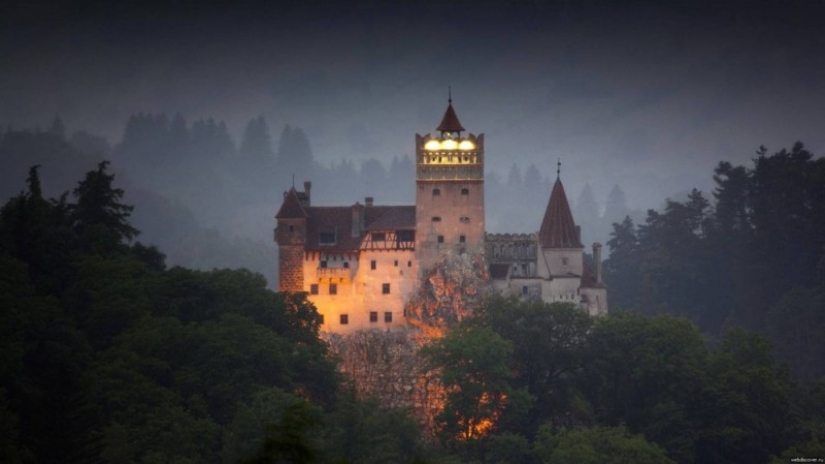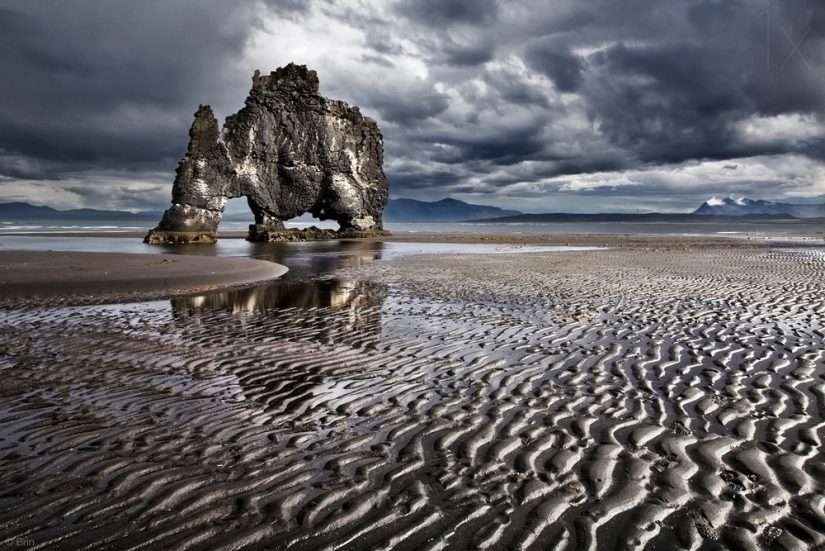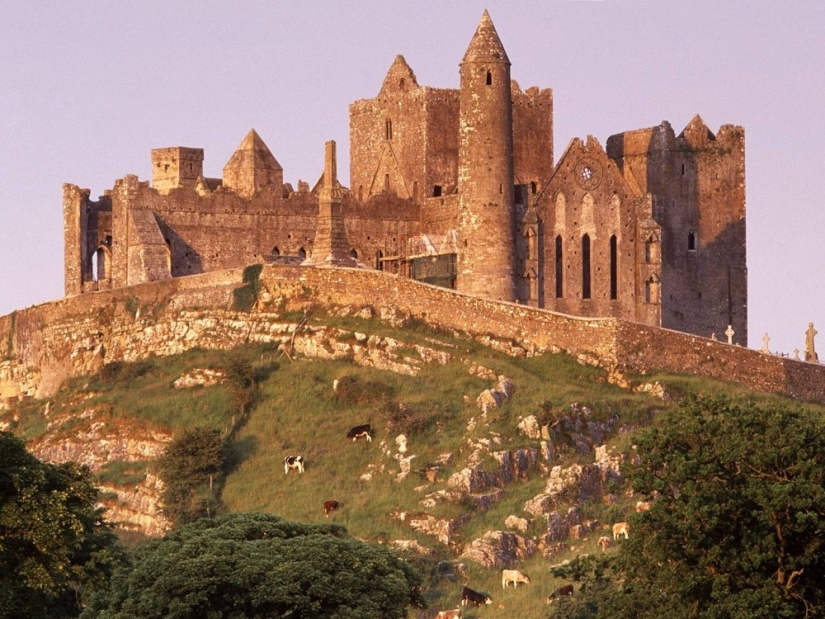12 main mystical places in Europe
The Old World. There doesn't seem to be a town, a castle, or a narrow cobbled street here that doesn't have ghost stories, scary bloody secrets, or mystical events associated with it. By the amount of the unknown, unexplained and unreal, this part of the world is still ahead of the whole planet. Meet a dozen of the main places in Europe associated with the unidentified.


The mystical capital of Europe, especially the Old City, offers the widest choice of encounters with the supernatural. Let's start with the famous Golem from the Jewish Quarter, the first in a series of Frankensteins.
In March 1580, the supreme Rabbi Lev ben Bezalel created a clay figure about one and a half meters tall, and then breathed life into it with the help of Kabbalistic spells.
Then everything went wrong, and the Golem escaped from the creator's power. Pacified, he was kept in the attic in the form of an effigy, but disappeared during the war. Rumor has it that he sometimes makes a promenade through Prague at night.
And in One of the most famous alchemists of the Middle Ages, Edward Kelly, lived and worked in the House of Faust. A visit to this building guarantees success in financial affairs.

The most famous Prague ghost — the spirit of Jan Huss, burned along with his works on June 6, 1415 — appears on moonlit nights near the Bethlehem Chapel, where Huss preached during his lifetime.
The second ghost and symbol of Prague is the spirit of Yachim Berka, who strangled his own bride and then hanged himself. Now once a month he stands sullenly on Platnerzhskaya Street in the hope of talking to an innocent girl. It is believed that if this happens, the ghost will finally calm down.

There are countless diamonds in stone caves… But in this — one of the most famous caverns in Europe — instead of diamonds, you will see a "3D cinema" of the Stone Age. Rock carvings — numerous colorful images of bison, horses, deer, wild boars and a little bit of people.
In addition, the artists used the relief of the walls to make the animals "alive", almost like in computer graphics, and when illuminated by fire flashes, the effect of movement was created, and in three dimensions at once.

Someone considers it the creation of "space wanderers", and someone demands not to offend our ancestors, because they, too, were perfectly familiar with the sense of beauty. And they had excellent artistic skills. Masterpieces were created, according to various sources, from 32 to 19 thousand years ago, and the first images of people on the walls of the cave belong to the same era.
The effect of contemplating the drawings is so amazing that reality recedes and you want to fly and shake a spear. Probably, a primitive man and an alien live in each of us at the same time.

This lake is the largest body of water throughout the Great Glen geological fault. It has more fresh water reserves than in the whole of Britain. But that's not why people from all over the world come here. They want to see the monster, the famous Nessie: either a plesiosaur that has survived since time immemorial, or an unknown life form at all.
There are legends that in the Middle Ages, an elegant lizard with a swan neck liked to feast on hapless fishermen, but lately it has not been seen. At the same time, photos, albeit muddy and fuzzy, appear regularly.

In this picture, of course, there is a collage, but tourists photograph strange objects in the lake all the time
And although it is unlikely to capture Nessie, the feeling of the presence of something extraneous on the waters of the lake is the most powerful. It is impossible to get rid of the thought that you are being watched by a pair of attentive and wise eyes — the eyes of a snake that has long known all the secrets of this world.

An interesting male ghost lives in the Gothic complex, striking with its gloomy beauty and austerity, founded in the XII century on the site of an ancient volcano.
A certain lieutenant and merchant Jan Palfiy, the then owner of the castle, was refused by a beautiful French aristocrat. The suffering retiree never married, and then threw himself into the moat altogether, having previously bequeathed his entire fortune to orphanages…

As a suicide, Jan was buried not in the cemetery, but in the castle. Perhaps that's why his restless soul still wanders through the winding corridors in our high-tech days. Sometimes a ghost is seen in the company of a certain woman in white.
But this is not a proud French Mademoiselle, but a native Slovakian Anna Berna, who during the senseless Thirty Years' War fell in love with a German officer and gave him some strategic secrets. She was hanged, as was customary then, but during the investigation she was kept in the Loophole Castle. It also "took root" here after death.
The castle complex is in excellent condition (partly on the same Yanov money), and there is no better place for excursions for people with strong nerves. The fact that some visitors ended up in the hospital with a heart attack does not count.

This place in the Old Town area inspires horror and awe at the same time. In the XVII century, during the next European plague, the Scottish authorities made a radical decision: those who fell ill with a terrible and virtually incurable disease in those years were brought here from all over the city and surrounding villages.
Probably, doctors with halberds considered themselves almost humanists: they did not burn patients alive, as in Saxony, and not sprinkled with quicklime, as in Hungary. They were simply locked up and waited until they themselves went to heaven.
The plague in Scotland was not as large-scale as in continental Europe, but there were many victims here. According to one of the archival records, in 1645, at the height of the epidemic, Patrick and Jane Mcconnehy left their daughter to die at this place, after which the ghost of Annie settled forever on the damp and gloomy streets of the city.

And to this day, little Annie touches the hands or clothes of those passing through the sinister alley. Her restless soul flies through the rooms of ancient buildings and sings children's Scottish songs in a thin plaintive voice.
Enterprising Edinburgers arranged large-scale expositions from the life of plague patients of that time in a dead end. They amaze with their realism, and it seems that you hear the moans of suffering and cries for help…

It so happened that in this port city in the last century, an abnormally many talented and endowed with incredible abilities people began to be born. But in everyday life they were, as a rule, absolutely helpless and fell, from the point of view of an ordinary person, into the category of crazy.
That is why the largest hospital in Italy for the insane and people with developmental delays was built here.
Years passed, and the number of patients only increased. Then a certain Professor Rampini, himself, apparently, distinguished by not entirely healthy logic, proposed a sensational method of treatment — to open a giant entertainment center where his patients would work exclusively. And the idea was realized!

Today, geniuses continue to work in shops, boutiques, cafes, clubs, whom the professor wanted to adapt to ordinary life in this way.
DJs, bartenders, waiters… It's as if you find yourself in the company of true Martians who read your thoughts, speak their incomprehensible dialect, perform alien music and prepare magical cocktails. And no one is surprised that they may pass through walls, move objects and see in the dark.
Apparently, this practice has been giving good results since the last psychiatric clinic in Trieste was closed in the early 80s. The number of suicides and hospitalizations has decreased. There are approximately 13.5 mental patients per one thousand residents in the city, and four mental health centers provide assistance.

The word "Carnac" was coined by the Bretons — a Celtic tribe that broke away from the Anglo-Saxons on the coast of France at one time. Literally means "road of stones". The structure in question existed even then, only it did not have a name.
This is a seemingly endless maze of menhirs, dolmens and cromlechs, that is, ritual structures made of stones that create bizarre patterns, obey their own laws and drive the uninitiated crazy. It is estimated that there are about four thousand of them, divided into three groups, although it is believed that once they were all one.

The stones seem to offer everyone a kind of quest: if you reach, starting from the southern tip, to the tomb called "Kerkado" with a mound piled above it — consider yourself lucky. You will have fame, money, and happiness in your personal life. If not, time will tell. Some, according to old-timers, wander along winding paths under the rays of the inhospitable Breton sun forever.
The structures, according to scientists, are about 5,000 years old, but what the images of the Christian cross and crescent, which simply did not exist then, do here is unknown to science. Nevertheless, Karnak is extremely popular with pilgrims: for a quarter of a century, proposals have been put forward to recognize it as a closed territory. So you need to hurry up to pass this stone maze.

The city by the Gulf of Corinth on the slopes of Mount Parnassus — sounds like a quote from Homer, isn't it? Once upon a time people came here from all over Greece. And not just like that, but to consult with the megaorakul of the ancient world.
And it all started with the fact that Apollo killed the wise but evil serpent Python and replaced him with his own priestess Pythia. She easily went into a trance, mumbled incoherently, although beautifully, and specially trained priests interpreted the "messages of the gods."
It seemed that this would always be the case: without the oracle's opinion, wars did not begin, peace was not concluded, travel was not undertaken and marriages were not registered. But in 398 AD, the Christian emperor Arkady came, but not alone, but with an army, and annulled the sanctuary. Fortunately, Delphi itself was not destroyed, but only abandoned.

Today, the restored city looks impressive and gives a clear idea of its greatness in ancient times. There was also an explanation for the strange behavior of the Pythia: geologists discovered hallucinogenic vapors emanating from a nearby source.
Although, if everything were so simple, it would be possible I would like to go to a nearby disco club for advice. And visitors to this place still have visionary abilities today. Probably, the god Apollo personally whispers to them what to expect from the future.

Hvitserkur means "white shirt" in Icelandic — this is how this stone-crystal "monster" is called on the shore of a deserted bay because of hundreds of sea snow gulls sitting on it in the morning.
But in the sunset rays of the sun, it seems to move, comes to life and impresses even more with its eerie beauty. Look from one side — an unknown beast, a werewolf, bent down to quench his thirst with sea water. And if you look at it from the other side — a giant needle eye with ragged edges.

This place has always attracted locals. Icelanders believed that time and space flowed through it directly to Valhalla — the residence of the gods and the paradise of the ancient Vikings. Therefore, Hvitserkur fulfills wishes, especially if you make them during the northern lights, which happens here five times more often (calculated!) than in other polar regions.

On a high hill in the mountainous part of Southern Transylvania, a medieval "high—rise building" - Bran Castle, better known as Dracula's Castle, is comfortably located. In the XIV century, it was conceived as a fortification complex to protect against the ubiquitous Turkish conquerors.
But as a result of backstage games and palace coups, the castle became the personal residence of the lord Vlad Tepes, who, thanks to mystical novels in Europe, was called Count Dracula.
What he did is well known to everyone: impaled, skinned, boiled in boiling water, successfully fought with the Turks (no, that's not it!), drank the blood of victims. With the light hand of Bram Stoker, he became not only a villain, but also a vampire.

Anyway, Vlad was an outstanding personality. Nothing is known about the appearance of his ghost in the walls of Bran, but the castle itself, especially at night, makes an intimidating impression.
And thoughts about what atrocities were committed here, coming after visiting the torture chambers, can deprive the most balanced person of sleep. And if you fall asleep here, you will definitely not avoid a meeting with the count.

Oddly enough, this picturesque country is called the birthplace of witches. Of course, everything is relative, but there have always been more servants of Satan per unit of population here than in Europe as a whole.
Mount Gruyere and the town of the same name with the Black Tower and the monastery of the Black Madonna remained the same as almost half a thousand years ago. As then, on a full moon, you can perform a ritual ablution in an Alpine lake (also Gruyere) by torchlight and hear lines of ancient incantations from the lips of nuns.

Gruyere is also home to the museum of the famous "Alien father" Hans Giger, an artist and designer with a very strange and frightening view of art.
It is believed that ablution reveals the subconscious and gives incredible superpowers, prolongs life and reveals the secrets of who is the true friend and enemy. Some after this ritual begin to levitate and speak in languages they did not know before. The Black Madonna is especially favorable to the fair sex: she grants them unlimited power over men.

About this massive piece of granite, the Irish say: "The Devil bit a piece off the Ground and spat it out. That's how Cashel was formed." Literally, the name translates from Gaelic as "stone pie". Nothing more frightening and causing mystical horror can be found on the Emerald Isle.
Standing in the middle of green meadows, a rock shaped like an ugly doughnut with a diameter of several kilometers, and a black castle on it, which is about a thousand years old and which, despite the abundance of Celtic crosses, does not save from the invisible presence of the enemy of the human race…

Well, how about without ghosts? They say that the Green Lady lives here — a magical beauty lady in a long elegant dress. It is believed that this is Elizabeth Connor, the daughter of one of the owners. Allegedly, the Green Lady is so sad that when meeting her, a person is also seized with the deepest sadness, which can turn into melancholy with a fatal outcome…
Recent articles

In Ancient Egypt, gods were revered, pharaohs were glorified, and majestic tombs were built. The builders of royal tombs were ...

Whether you are a tourist or a professional photographer, in both cases Lapland is a truly magical place. There is not only a very ...

Why should a coffin be a boring box if it can be ordered in the form of a lobster, fruit, bird or shoe? Residents of the African ...